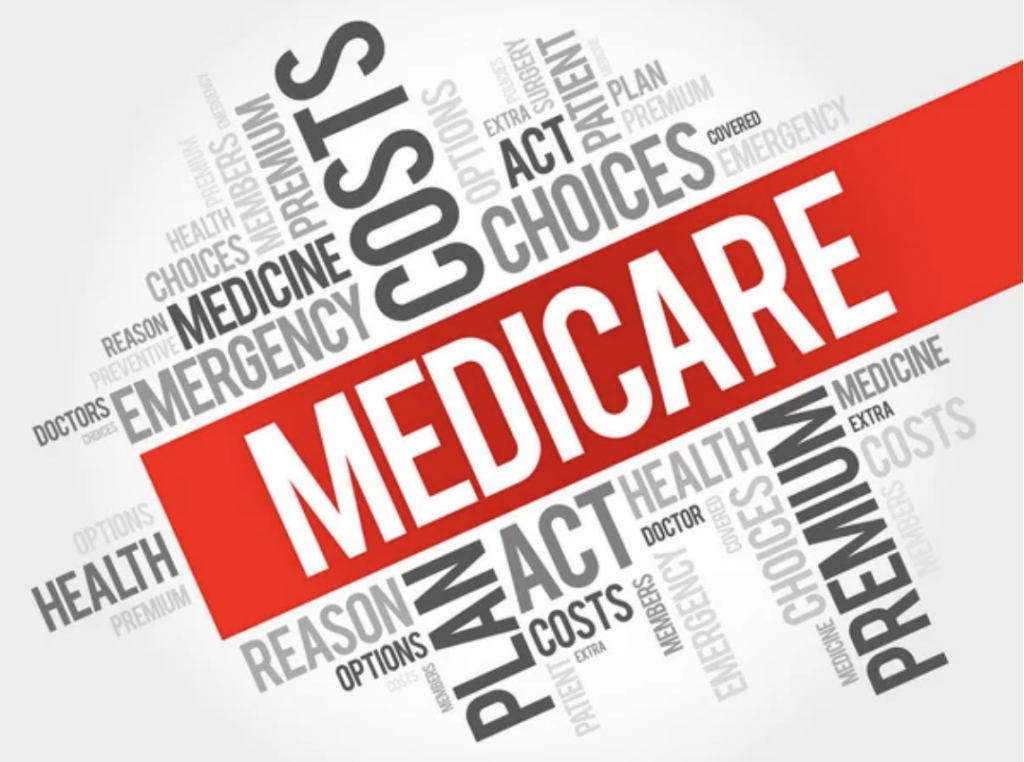The Future of Medicare What You Need to Know

As healthcare plays an increasingly vital role in our lives, staying informed about the future of programs like Medicare becomes crucial. For millions of individuals and families, Medicare serves as a lifeline for accessing essential healthcare services. In this guide, we will delve into the key topics encompassing the future of Medicare, ensuring that you have the necessary knowledge to navigate the ever-evolving healthcare landscape.
From projected spending and financing challenges to proposed reforms and their potential impact on beneficiaries, this exploration provides the insights needed to make informed decisions about your healthcare journey.
Join us as we unravel the intricacies of Medicare’s future and empower you to understand what lies ahead.
Medicare Spending and Financing – Navigating the Path Ahead
In this section, we will delve into the intricacies of Medicare spending and financing, shedding light on this vital program’s current state and future trajectory.
Medicare’s Share of National Health Spending and Federal Budget
As a cornerstone of healthcare coverage, the Medicare program plays a significant role in national health spending and the federal budget. Its importance cannot be overstated, as it provides essential healthcare services to 65 million individuals aged 65 and older and individuals with long-term disabilities. When examining Medicare’s share of national health spending, it becomes evident that this program accounts for a substantial portion.
In the most recent annual report from the Board of Medicare Trustees and projections from the Congressional Budget Office (CBO), we gain insights into trends in Medicare spending and the key factors driving expenditure growth. These include higher enrollment, escalating health care costs, and increased payments to Medicare Advantage plans. By comprehending Medicare’s position within the broader landscape of national health spending, we can better grasp its significance and implications for healthcare financing.
Concerns Surrounding Medicare Advantage (MA)
The Medicare Advantage (MA) program, which has witnessed remarkable growth in recent years, raises important concerns that warrant our attention. With enrollment projected to surpass 50 percent of the eligible Medicare population in the coming year and potentially reach 69 percent by 2030, it is vital to examine the factors fueling this expansion.
The subsidies supporting MA’s growth, such as benchmarks set above traditional Medicare spending, quality bonuses, and favorable risk coding adjustments, have contributed to its increasing popularity among beneficiaries. By exploring the implications of these subsidies and their impact on the overall Medicare landscape, we can better assess the trajectory of MA and its implications for the future.
Historical and Projected Medicare Spending
A comprehensive understanding of Medicare’s spending patterns, both historically and in projected scenarios, provides valuable insights into its sustainability and potential challenges. From $541 billion in 2011 to $829 billion in 2021, Medicare spending on Part A, Part B, and Part D benefits has experienced substantial growth, reflecting increasing healthcare utilization and rising costs.
Projections from the Medicare Trustees and CBO indicate that net Medicare spending, accounting for premiums and offsetting receipts, will grow as a share of the federal budget and the nation’s economy. Factors such as the aging population, service utilization patterns, and healthcare cost escalation contribute to these projections.
By examining these trends, we can better anticipate the financial landscape of Medicare and prepare for future scenarios.
Proposed Changes to Medicare – Shaping a Sustainable Future
As we navigate the future of Medicare, it is essential to explore proposed changes to ensure the program’s long-term sustainability and effectiveness. In this section, we will examine key proposals that have been put forth to reshape Medicare and address evolving healthcare needs.
Transforming Medicare into a Premium Support Plan
One significant proposal advocates a shift towards a premium support model, transforming how Medicare beneficiaries receive their health coverage. Under this approach, newly eligible beneficiaries would have the option to choose from a selection of private insurance plans instead of traditional Medicare. The federal government would contribute a fixed amount towards the premiums of the chosen private insurance plan.
If the premiums exceed the government’s contribution, beneficiaries would be responsible for paying the difference. It is important to note that if the government’s contribution does not keep pace with premium increases over time, the burden on beneficiaries could grow. This proposal aims to introduce more choice and competition into Medicare, potentially driving efficiencies and cost savings.
Adjusting Medicare Premiums for Higher-Income Beneficiaries
Several proposals suggest adjusting premiums for higher-income beneficiaries to ensure greater financial equity within the Medicare system. Currently, most Medicare beneficiaries pay separate monthly premiums for Part B (doctor visits) and Part D (prescription drugs coverage).
In light of the proposed changes, individuals whose incomes exceed $97,000 and couples with incomes over $194,000 would be subjected to higher premiums. The precise amount you would have to pay is determined by your modified adjusted gross income, as filed on your federal tax return from two years prior. This adjustment aims to create a fairer distribution of costs and align premiums more closely with beneficiaries’ income levels.
Updates to Medicare Part D Prescription Drug Coverage
Medicare Part D provides prescription drug coverage and is subject to ongoing evaluation and potential updates. Recent projections indicate that average monthly premiums for Part D stand-alone drug plans are expected to rise by 10%. This increase surpasses the prevailing annual inflation rate and the Social Security cost-of-living adjustment for that period.
The need for adjustments in Part D coverage and pricing arises from various factors, including rising drug costs and evolving market dynamics. Addressing these challenges aims to enhance the affordability and accessibility of prescription drugs for Medicare beneficiaries.
Increasing Supplemental Plan Costs and Reducing Coverage
In light of the escalating healthcare costs faced by elders, there have been discussions surrounding potential adjustments to supplemental insurance coverage, specifically Medigap plans, to mitigate out-of-pocket expenses. One proposal under consideration involves revising the pricing structure of certain supplemental plans, particularly those offering extensive coverage that eliminates elder’s out-of-pocket costs.
Additionally, there are suggestions to modify the coverage provided by Medigap plans. For instance, certain proposals may entail excluding the initial $500 of a Medicare beneficiary’s out-of-pocket expenses and providing coverage for only 50 percent of the remaining charges.
It is worth noting that these proposals aim to strike a delicate balance between maintaining sufficient coverage and ensuring the long-term financial viability of the Medicare program.
Medicare Expenditure Trends and Proposed Solutions: 2020-2030
In this section, we’ll examine the future of Medicare spending, including projected growth rates and per capita expenditures. We’ll also explore a proposed solution to address funding challenges in Medicare’s hospital services and an initiative for improved access to generic biologic drugs.
Growth in Total Medicare Spending: 2020-2030
- 2010-2020: The average annual growth rate of total Medicare spending decreased from 9.0% to 5.9% due to the influx of younger and healthier beneficiaries and policy changes through the Affordable Care Act (ACA) and Budget Control Act (BCA) 2011.
- 2020-2030: Average annual growth in total Medicare spending is expected to increase slightly to 6.5%, reflecting changing demographics and evolving healthcare needs of the Medicare population.
Growth in Medicare Spending per Person: 2020-2030
Medicare spending per enrollee grew at comparable rates to private health insurance spending.
- 2010-2020: Medicare per capita spending increased at an average annual rate of 1.9%, while private health insurance spending per capita grew at 2.8%.
- 2020-2030: Projections suggest that Medicare per capita spending will align with private health insurance, growing at around 5.3% and 5.4%, respectively.
Growth in Per Capita Medicare Spending on Parts A, B, and D: 2020-2030
- 2010-2020: Growth rates for each Part (A, B, and D) were lower compared to previous decades. Part A decreased from a 4.5% to a 0.5% growth rate.
- 2020-2030: Projections indicate an increase in per capita spending growth rates. Part A is projected to grow at 4.5%, Part B at 7.2%, and Part D at 3.7%. Factors include increased spending on outpatient hospital services, physician-administered drugs, changes in the generic dispensing rate, and increased specialty drug use.
Increasing the Payroll Tax Rate to Generate New Revenue
One proposed solution to address the potential funding shortfall in Medicare’s hospital services (Part A) involves increasing the payroll tax rate. Currently, workers and their employers each contribute 1.45% of earnings, totaling 2.9%.
Increasing the payroll tax rate by 0.5% to 3.9% (or 1.95% each for workers and employers) would generate additional revenue to support Medicare’s inpatient hospital expenses. For individuals earning around $70,000 annually, this increase would amount to an additional $350 in Medicare payroll taxes per year.
Note: These figures are for illustrative purposes and may vary based on specific policy proposals and income brackets.
Rising Share of Spending on Physician and Outpatient Services
Over the past decade, there has been a notable change in the distribution of Medicare benefit payments among different program parts. Between 2011 and 2021, spending on Part B benefits, encompassing physician services, hospital outpatient services, physician-administered drugs, and other outpatient services, increased from 41% to 48% of total Medicare spending. Conversely, the share of total spending on Part A benefits, primarily covering hospital inpatient services, decreased from 47% to 39% during the same period.
This shift indicates a growing emphasis on outpatient care, with Part B now accounting for the highest share of Medicare benefits.
Improving Market Access to Generic Versions of Biologic Drugs
The proposal to enhance market access to generic versions of biologic drugs aims to reduce costs for Medicare and its beneficiaries. Currently, manufacturers enjoy 12 years of exclusive market access before biosimilar versions can enter the market.
This proposal suggests reducing exclusivity to seven years, enabling earlier competition and access to more affordable generic medications. By promoting the availability of biosimilars, Medicare can achieve significant cost savings.
Improved Enrollment Access for Medicare – Expanded Special Enrollment Periods
Eliminating Coverage Waiting Periods
Previously, individuals who signed up for Medicare after their initial eligibility window, typically within three months of turning 65, had to wait two to three months before their coverage became effective.
However, in 2023, you can sign up for Medicare Part B for the first time during the General Enrollment Period (GEP), which runs from January 1 to March 31 each year, if you missed your Initial Enrollment Period (IEP) and are not eligible for the Part B Special Enrollment Period (SEP).
Now, as long as individuals apply for Medicare during the general or a special enrollment period, their coverage will take effect at the beginning of the following month. This change ensures that beneficiaries can access their Medicare benefits promptly, without unnecessary delays.
Expanded Special Enrollment Periods
New special enrollment periods have been introduced to provide more flexibility and support those who missed their initial enrollment opportunity. These special enrollment periods cater to individuals who face challenges in enrolling due to specific circumstances beyond their control.
Let’s look at two groups eligible for special enrollment:
A. Individuals Affected by Natural Disasters: People who could not enroll in Medicare during their initial eligibility period due to being affected by a natural disaster can now take advantage of a special enrollment period. This ensures that they have an opportunity to enroll and receive the healthcare coverage they need, even if they were unable to do so initially.
B. Individuals Given Misinformation by Employers: If individuals received incorrect information from their employers that caused them to miss their initial enrollment period, they are now eligible for a special enrollment period. This provision ensures that individuals are not penalized for misinformation received, allowing them to enroll in Medicare and access the healthcare services they require.
Unlock Your Health Potential with Plan Medicare
At Plan Medicare, we understand the importance of comprehensive health coverage tailored to your unique needs. Our team of professional New York Medicare insurance advisors is here to guide you every step of the way, ensuring you get the coverage you deserve. Best of all, our consultation service is 100% free!
When you choose Plan Medicare, you can expect personalized service from licensed agents who will take the time to understand your healthcare requirements. Our agents will provide expert advice, answering all your insurance-related questions and keeping you informed about the latest developments. We aim to simplify the enrollment process and make it hassle-free, handling all the paperwork and ensuring a smooth experience.
Take the first step towards securing your health and well-being by calling us at 516-900-7877 to speak to our licensed agents. Alternatively, you can Book an Appointment now and start your journey with Plan Medicare today!







